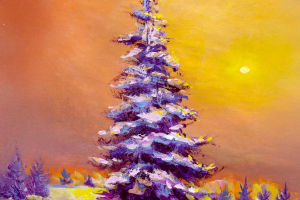It's fascinating how something discarded—old magazines, scraps of paper, or forgotten objects—can be reborn as a striking piece of art.
Collage art thrives on transformation, weaving fragments of reality and imagination into layered, thought-provoking visuals. But what makes a collage truly impactful?
The secret lies in how artists use discarded materials and balance abstract versus realistic elements to create contrast and depth.
Transforming Discarded Materials into Visual Stories
Collage art's charm is in its resourcefulness. Using leftover papers, ticket stubs, old photographs, or even small objects lets artists build unexpected textures and layers. Each piece carries its own history, adding emotional weight and visual complexity.
When combined thoughtfully, these fragments form a rich tapestry that invites viewers to explore details and meanings.
Layering is essential. Overlapping torn paper edges, adding transparent materials, or including 3D objects like fabric or metal creates tactile depth. This layering isn't just decorative—it shapes the viewer's journey through the piece, guiding attention and revealing hidden connections between elements.
The Power of Contrast: Abstract Meets Reality
A captivating collage often thrives on contrast. Combining realistic photographs or recognizable objects with abstract shapes, colors, and textures creates tension and intrigue. This interplay challenges viewers to reconcile opposing ideas or emotions within one artwork.
For example, an abstract splash of paint might clash with a detailed photo of a cityscape, suggesting chaos versus order. Or fragmented images of faces might float among geometric shapes, reflecting fragmented identity or memories. This push and pull energizes the composition, making it visually stimulating and emotionally resonant.
Creative Tips for Crafting Impactful Collages
If you want to begin or expand your collage practice, consider these tips:
1. Curate your materials with intent. Gather papers, photos, and small objects that speak to your theme or mood.
2. Play with scale and layering. Mix large bold shapes with tiny details to create visual rhythm.
3. Experiment with textures. Combine smooth magazine gloss, rough torn edges, and soft fabrics for tactile interest.
4. Balance abstract and realistic elements. Use contrast to build tension but keep harmony so the piece feels cohesive.
5. Allow surprises. Sometimes unexpected combinations or "mistakes" spark fresh ideas and energy.
Collage as Personal Expression and Storytelling
Beyond assembling materials, collage art lets artists tell deeply personal stories. Each discarded item might represent a memory, emotion, or social commentary. By layering fragments, artists construct narratives that invite viewers to interpret meaning based on their own experiences.
This makes collage uniquely interactive — no two viewers interpret a piece the same way.
Moreover, collage reflects the fragmented nature of modern life. In a world of mixed media, social influences, and constant information, collage visually mirrors this complexity, portraying the chaotic yet beautiful patchwork of daily life.
Why Collage Art Resonates Today
In our fast-paced, digital world, collage offers a hands-on, slow creation process that reconnects artists with materials and memories. It's a form of storytelling where fragments of everyday life gain new meaning.
Through contrast and layering, collage communicates complex emotions and ideas that pure photography or painting might not convey as powerfully.
Next time you see scraps or discarded papers, try imagining their potential. What stories could they tell in your hands? What emotions could their textures and colors evoke? The art of collage isn't just about glue and paper—it's about transforming the ordinary into the extraordinary, one layer at a time.
Would you like me to share step-by-step collage techniques or ideas for sourcing interesting materials?


